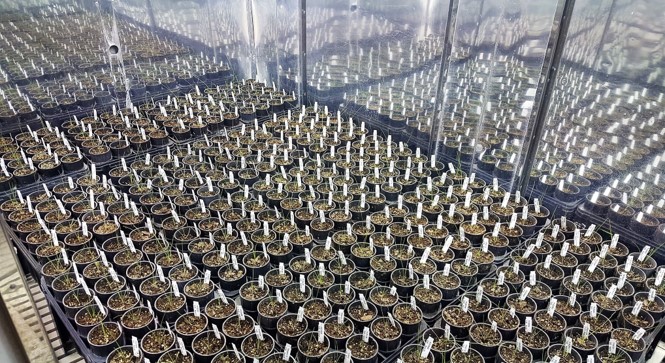By Nicole Mihelich
Here at the University of Minnesota Turfgrass Science Program, one of our areas of research is developing low-input turfgrasses that can better suit the consumer and the environment with less need for water, fertilizer, mowing, and other inputs. Fine fescue turfgrass species have been shown to perform well under these low-input conditions. Fine fescues are often found in commercial seed mixtures, and their availability continues to rise. However, there is little to no availability of fine fescue sod despite high demand from consumers.
Sod is turfgrass that has been planted and grown, then harvested in sections to be transplanted elsewhere, with roots and other plant material holding it together (Figure 1). Almost all sod sold in Minnesota and the surrounding states consists of Kentucky bluegrass, which generally has higher maintenance requirements than fine fescue. Consumers would benefit from having the option of using fine fescue sod, but to this point, fine fescue sod production has been challenging for sod growers. Thus, we seek to identify traits that are desirable for sod formation and improve low-input fine fescue turfgrass for a more sustainable approach to sod production.
To assess the sod-forming ability of fine fescue species, we are developing large populations of three fine fescue species: hard fescue, Chewings fescue, and strong creeping red fescue (Figure 3). The former two are mostly observed to be bunch-type species (spread by tillers only, and do not form rhizomes), while strong creeping red fescue has prominent rhizome production, hence its name. These populations include sampled grasses from all over their historical habitat across Eurasia to capture maximum diversity of these species overall as well as for rhizome and tillering. Within these large populations, plants will be selected for strong and poor rhizome and tillering for each species. The best and worst plants of each species for their ability to spread horizontally can then be used in further experiments to study why and how horizontal spreading occurs in fine fescues.
Little is known about what combination of traits in fine fescues are optimal for sod production. Through the evaluations of these populations, we hope to learn more about what characteristics of fine fescues are needed for high quality and rapid sod development. This research can lead to the diversification of sod choices for more low-input and sustainable turfgrass to serve both consumers and the environment.


